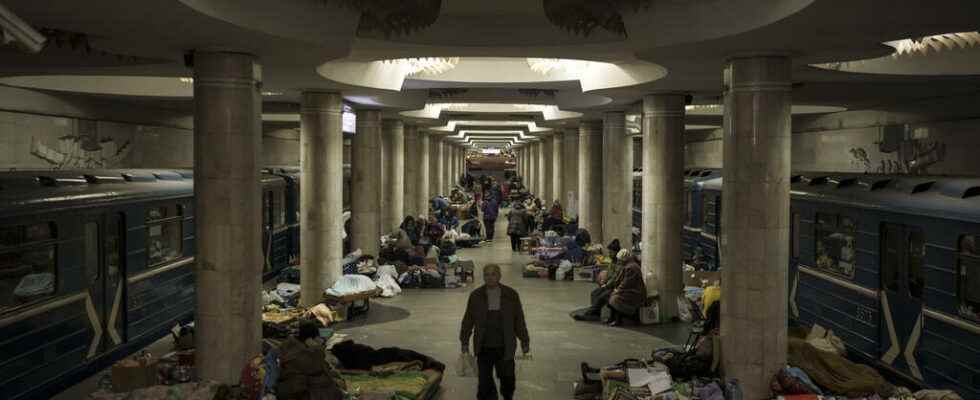The north and east of Ukraine continue to come under Russian artillery fire, and in thousands of municipalities there is only one solution for civilians: to take refuge in communal shelters or underground dug under their houses. In the Mikolaiv region, the fighting is still raging, with an increasing toll and clearing work that continues.
In Kharkiv, thousands of people have been living in isolation for weeks waiting for the end of the bombardments, report our special envoys Vincent Souriau and Sami Boukhelifa. In the basement of a school turned into a makeshift camp, Anya celebrates her 34th birthday underground. There are the gray walls, the neon lights, the mattresses thrown on the floor and, little miracle, for a few days, the wifi has arrived.
“ We cobbled together a connection because the router was upstairs, and as soon as a shell exploded, everyone rushed outside to check on their families. It was too dangerous and now we don’t need to move says Anya.
►Listen: Living Under Siege: From Sarajevo to War in Ukraine
Online courses for children
It’s at night that the shells hit the hardest in Kharkiv, so every evening a hundred people take refuge in the basement of this school. At first it was panic, but over time people get used to everything. And this female doctor does not notice any psychological distress: “ We tend to have people on treatment who are afraid of running out of medication. We’ve stocked up here, and if we have the right pills, we can give them to them. »
The biggest worry in all of this is education. children. In Kharkiv, schools have been closed for a month, but two days ago the region launched online classes. And the children of this shelter will finally be able to change their minds.
Strikes at Mikolaiv
Fighting also continues in the Mikolaiv region, the port located at the mouth of the Dnieper. It is the last major city on the shores of the Black Sea which blocks access to Odessa for Russian troops.
On Tuesday, March 29, a strike ripped open the building of the regional administration of Mikolaiv and according to the latest assessment, still provisional, 15 people were killed and 33 others injured. Clearing work continues explain our special envoys, Anastasia Becchio and Boris Vichith.
In search of the missing
The mechanical shovels are busy around the imposing eight-storey white building. The missile left a gaping hole above a huge pile of rubble. Armed soldiers cordoned off the place.
” Unable to pass “Laments a sixty-year-old, disoriented, looking for his daughter, Nadezhda, 44, who worked in the accounts of the regional administration:” I went to the hospital, to the emergency room, to the morgue, she’s not there. When it happened, I called her, called her, but she never answered. At some point I got a weird message that said she was online, but that was it. I have little hope. »
A little haggard, this father has no news of his wife who arrived at work twenty-five minutes before the explosion: “ We can’t find it. But not everyone has yet been found and identified. His desk was where the hole is, just above Kim’s desk. »
A civil administration that functioned in times of war
Vitaly Kim, the region’s popular governor, was not in the building at the time of the attack: ” It is a civil administration, there was no HQ, it is not a military site. All the people who were employed here are heroes: we came to work without interruption for thirty-four days of war. »
The clearing work was suspended, the time to blow up a section of the building which threatened to collapse at any time. Rescuers no longer expect to find survivors in the rubble.
►To listen: War crimes in Ukraine: what can international justice do?
